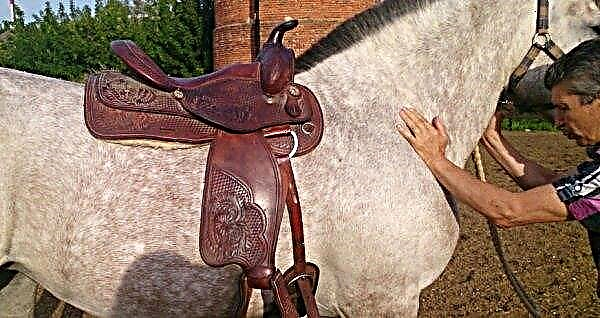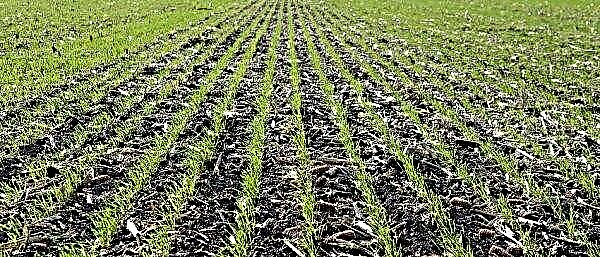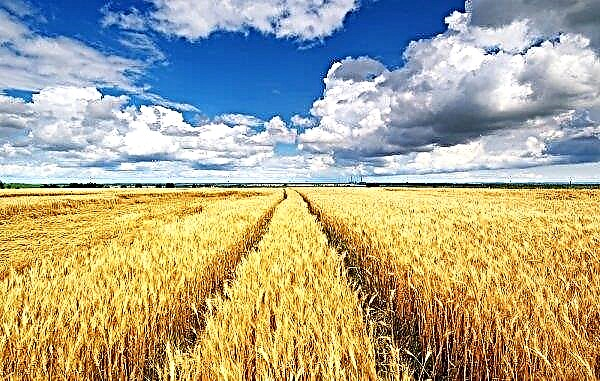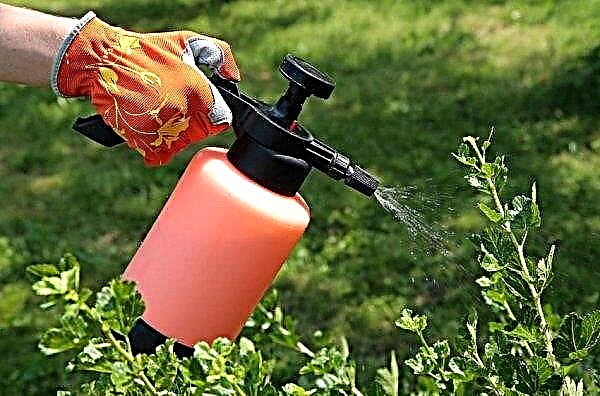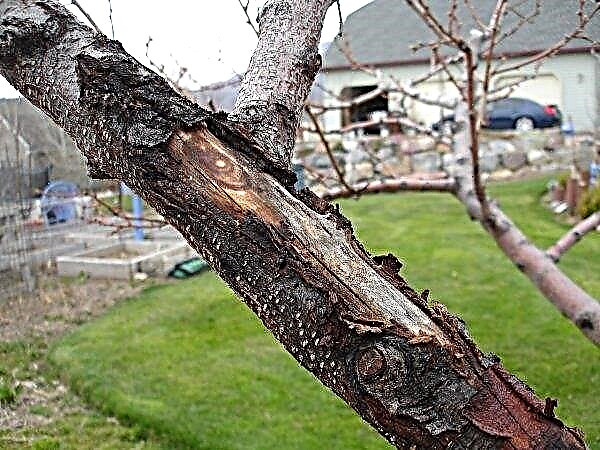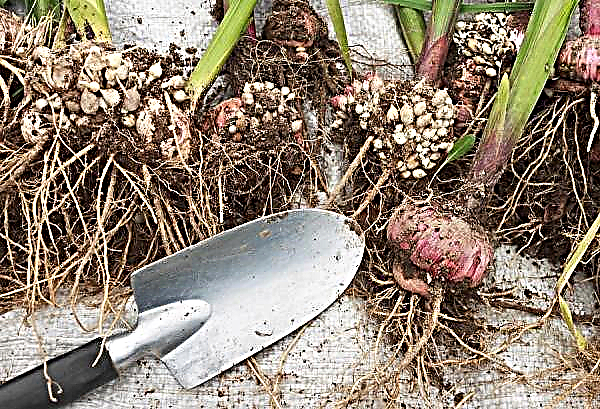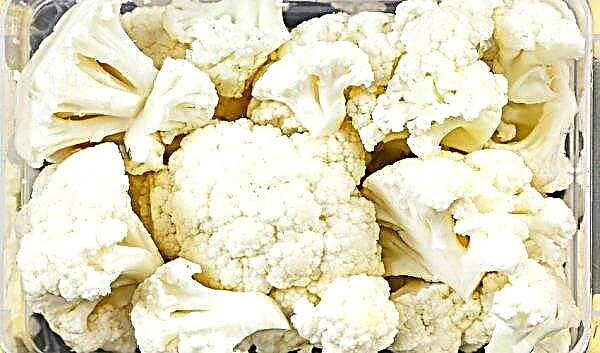Omega variety is a universal Kamchatka type of honeysuckle with an average ripening period and large fruits weighing more than 1 g. It is highly resistant to diseases, pests and frosts. Due to the spherical shape of the bush is often used in landscape architecture.
Description of Omega Honeysuckle Varieties
Due to its unique properties, the plant is widely used in folk medicine. Omega fruits are rich in organic acids, vitamins A, B, C and sugar. Berries can be eaten both fresh and processed (jam, raw jam, juice, jelly, etc.).
Selection history
Omega is one of the Leningrad varieties. It was obtained at the Pavlovsk experimental station of the All-Russian Research Institute of Plant Production named after N. I. Vavilova. Cross-breeding of elite dessert species of honeysuckle of the Primorsky Territory and Kamchatka made it possible to obtain a large-fruited and high-yielding variety resistant to adverse environmental conditions. Ripe Omega fruits remain on the bush for a long time without crumbling.
Appearance, characteristics of berries, ripening time, yield
The Omega bush is medium-tall (about 1.5 m high) with a thick, flat-round crown. Shoots are straight, bushy, not lowered. Large berries have an elongated oval shape with a narrowed base and a sharp peak. They are blue-blue with a dense and tuberous surface, covered with a thick waxy coating.
Important! The botanical description of varietal honeysuckle is easily confused with the species. The main difference is that the first propagates only by young cuttings.
Fibrous pulp has a delicate aroma and sweet dessert taste with pronounced sourness. The fruits ripen in the period from June 17-22. The average yield is 2.2 kg / bush (56–93 kg / ha).
100 g of Omega honeysuckle fruits contain:
- sugar - 8.8 g;
- organic acids - 2.3 g;
- Vitamin C - 52 mg;
- Vitamin B1 - 3 mg;
- Vitamin B2 - 3 mg;
- vitamin A - 70.4 mcg;
- R-active polyphenols - up to 2800 mg;
- potassium, K - 70 mg;
- sodium, Na - 35 mg;
- phosphorus, Ph - 35 mg.
Advantages and disadvantages of the variety
- Honeysuckle Omega has several advantages compared to other varieties:
- resistance to sudden changes in temperature;
- high biological value;
- the fruits have a dessert taste (there is no bitterness);
- high productivity;
- weak crumbling.
- Pronounced disadvantages include:
- lack of resistance to aphids;
- high sugar content;
- short-term storage of fruits.
Did you know? Omega honeysuckle fruits have a beneficial effect on the human body, alleviating the symptoms of gastritis and anemia. Customer reviews indicate an effective anti-inflammatory effect.
Agricultural technology
Optimal for growing this plant are climatic zones with the lowest possible temperature up to -34 ° С. Negatively affect the viability of the plant: drought, scorching sun, long winter thaws that provoke early flowering. Since in nature honeysuckle grows in forest and marshy areas, when planting, seedlings should be provided with a sufficient amount of sunlight and moisture (especially in the dry period).
Seat selection
Honeysuckle gives the richest crop, growing on peaty and bog soils, so the choice of planting location should fall on chestnut and heavy clay chernozems. The optimum acidity of the soil can vary between 5.5–6.5 pH. Omega is a moisture-loving variety, therefore, in May - June (drought period), drip irrigation must be established, which will make it possible to fertilize with liquid fertilizers. Additional watering affects the increase in the fetus up to 18%, but do not “fill” the plant, as this will lead to its death.
Omega is a moisture-loving variety, therefore, in May - June (drought period), drip irrigation must be established, which will make it possible to fertilize with liquid fertilizers. Additional watering affects the increase in the fetus up to 18%, but do not “fill” the plant, as this will lead to its death.
Honeysuckle Omega needs a sunny area and soil saturated with organic compounds and mineral elements. It is permissible to plant shrubs mixed with berry crops, which are characterized by similar requirements for soil and location (barberry, blackcurrant, blueberry, dogwood, etc.).
Landing and care
Optimal for the landing of Honeysuckle Omega is the autumn period (survival rate of 100%). Without harm to the plant, spring transplantation with a closed root system is possible, but the survival rate in this case drops to 80%. For planting, 2-year-old seedlings are preferred, as the adaptation process is easier. The planting pattern depends on the method of fruiting. For assembly by a combine harvester it is 3.6–4 × 0.6–0.8 m, for manual - 3 × 1 m. Honeysuckle is a perennial plant (bears fruit up to 30 years), so before planting, it is worth feeding the soil with high-organic fertilizer nitrogen, phosphorus and potassium. The optimal size of the pit for landing is 40 × 50 × 40 cm.
The planting pattern depends on the method of fruiting. For assembly by a combine harvester it is 3.6–4 × 0.6–0.8 m, for manual - 3 × 1 m. Honeysuckle is a perennial plant (bears fruit up to 30 years), so before planting, it is worth feeding the soil with high-organic fertilizer nitrogen, phosphorus and potassium. The optimal size of the pit for landing is 40 × 50 × 40 cm.
Did you know? Any kind of processing of honeysuckle berries significantly reduces its healing properties, but retains a unique sweetish taste.
After it is necessary to water the seedlings abundantly and mulch. Every autumn, the plant should be fed (20–30 g of superphosphate and 15–20 g of potassium salt per 1 m² of soil near the bush). The first five years, honeysuckle develops slowly. During this period, do not forget about the fight against perennial weeds that deplete the soil.
Pollination Features
Honeysuckle flowers are self-sterile; therefore, for optimal cross-pollination, 2-3 modern varieties of simultaneous flowering should be planted in stripes in several rows. On a production scale pollinating insects are desired, preferably bumblebees (at least 3 families per hectare), which, if necessary, can carry out pollen transfer even during early spring flowering at temperatures up to -8 ° C without loss of crop. Domestic bees are also suitable, but at low temperatures they will not be able to qualitatively dust two adjacent flowers that form one fruit. In this case, the fetus may turn out to be small and deformed.
Domestic bees are also suitable, but at low temperatures they will not be able to qualitatively dust two adjacent flowers that form one fruit. In this case, the fetus may turn out to be small and deformed.
Pest and Disease Control
Honeysuckle is a relatively young berry crop. During this period, it was not noted that much damage was done by pests, but nevertheless, it can become a threat to scale insects, honeysuckle striped sawfly and various types of leaflets. The main diseases are leaf spot and powdery mildew. For treatment, spraying of bushes with 0.2% “Fundazole” and 1% solution of copper sulfate is used. With powdery mildew, the drug "Topaz" is used. To eradicate pests, the honeysuckle is sprayed with a 0.3% solution of Karbofos or a 0.2% solution of Chlorofos. Insignificant damage to the plant can be caused by birds, biting buds in winter, and in the spring-summer period - eating ripe berries.
For treatment, spraying of bushes with 0.2% “Fundazole” and 1% solution of copper sulfate is used. With powdery mildew, the drug "Topaz" is used. To eradicate pests, the honeysuckle is sprayed with a 0.3% solution of Karbofos or a 0.2% solution of Chlorofos. Insignificant damage to the plant can be caused by birds, biting buds in winter, and in the spring-summer period - eating ripe berries.
Cropping and shaping the crown
Omega variety requires a systematic phased removal of skeletal branches that are not able to give the desired quality and quantity of fruits. This procedure provokes the growth of new shoots, on which the harvest will be more abundant. It is better to form bushes after 5 years from the moment of the first fruiting. Pruning should be carried out throughout the entire life cycle of the plantation.
Wintering
At rest, the shoots and buds of Omega honeysuckle can withstand frosts down to -34 ° C. Even during sudden temperature changes, this variety showed high yields. Honeysuckle buds bloom within a few days after the transition of the daily average temperature through 0 ° С.
Important! Seedlings during the first wintering should be insulated with a layer of mulch of 15 cm.
Harvesting and transportation of the crop, shelf life of berries
Harvesting can be done manually or mechanically, followed by sorting the berries. Due to the thick skin, freshly picked omega honeysuckle fruits have good transportability over medium distances, but they are stored for only 2-3 days. Since honeysuckle fruits are perishable, it is advisable to subject the product to shock freezing, vacuum drying or preservation for long-term preservation of useful properties and taste. Omega variety is very unpretentious, but in order to achieve high yields, you should carry out constant care of the seedlings.
Since honeysuckle fruits are perishable, it is advisable to subject the product to shock freezing, vacuum drying or preservation for long-term preservation of useful properties and taste. Omega variety is very unpretentious, but in order to achieve high yields, you should carry out constant care of the seedlings.

